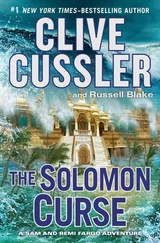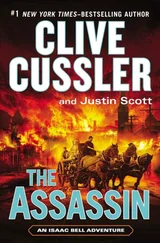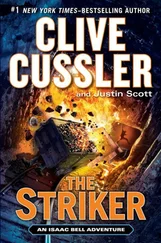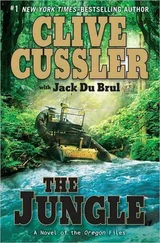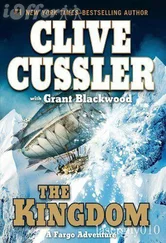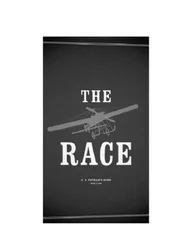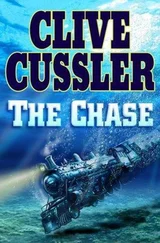He telephoned Joseph Van Dorn long-distance in Washington.
“Excellent job on the Frye Boys,” Van Dorn greeted him. “I just had lunch with the Attorney General, and he is tickled pink.”
“Thank John Scully. I only held his coat.”
“How much longer to wrap up the Langner suicide?”
“This is bigger than Langner,” Bell retorted, and he told Van Dorn what had transpired.
“Four murders?” Van Dorn asked incredulously.
“One for sure-the one I witnessed. One likely-Langner.”
“Depending upon how much credence you put in that crackpot Cruson.”
“And the other two we have to investigate.”
“All connected by battleships?” Van Dorn asked, still sounding incredulous.
“Every victim worked in the dreadnought program.”
“If they’re all victims, who’s behind it?”
“I don’t know.”
“I don’t suppose you know why either.”
“Not yet.”
Van Dorn sighed. “What do you need, Isaac?”
“Van Dorn Protection Services to guard Farley and Wheeler.”
“To whom do I bill those services?”
“Put it on the cuff ’til we figure who the client is,” Bell answered drily.
“Very amusing. What else do you need?”

BELL ISSUED INSTRUCTIONS to the crew of operatives Van Dorn put at his call-temporarily, as his call with the boss had made clear. Then he took the subway downtown and a trolley across the Brooklyn Bridge. John Scully met him in a Sand Street lunchroom a stone’s throw from the fortresslike gates of the Brooklyn Navy Yard.
The cheap restaurant was starting to fill up as day shifts ended at the yard and surrounding factories, and boilermakers, drop forgers, tank testers, reamers, and patternmakers, machinists, coppersmiths, pipe fitters, and plumbers rushed in for supper.
Scully said, “Near as I can discover, Kent’s on the up-and-up. All he does is work and work some more. Devoted as a missionary. I’m told he hardly ever leaves his drawing table. He’s got a bedroom attached to his drawing loft, where he stays most nights.”
“Where does he stay the rest of the nights?”
“Hotel St. George when a certain lady from Washington comes to town.”
“Who is she?”
“Well, that’s the funny thing. She’s the daughter of your exploding-piano guy.”
“Dorothy Langner?”
“What do you think of that?”
“I think Farley Kent is a lucky man.”

THE BROOKLYN NAVY YARD surrounded a large bay of the East River between the Brooklyn Bridge and the Williamsburg Bridge. Designated a “battleship yard,” and officially named the New York Navy Yard, its factories, foundries, dry docks, and shipways employed six thousand ship workers. Tall brick walls and iron gates enclosed twice the acreage of the Washington Navy Yard. Isaac Bell showed his Navy pass at the Sand Street Gate, which was flanked by statues of eagles.
He found Farley Kent’s drawing loft in a building dwarfed by enormous ship sheds and gantry cranes. Night had blackened the high windows, and the draftsmen worked by electric lamps. Kent was young, barely out of his twenties, and deeply shaken by Alasdair Mac-Donald’s murder. He mourned that MacDonald’s death would cripple America’s development of large-ship turbines. “It will be a long while before the United States Navy will be able to install advanced turbines in our dreadnoughts.”
“What is Hull 44?” Bell asked.
Kent looked away. “Hull 44?”
“Alasdair MacDonald implied that it was important.”
“I’m afraid I don’t know what you are talking about.”
“He spoke freely about Arthur Langner and Ron Wheeler and Chad Gordon. And about you, Mr. Kent. Clearly, you five men worked closely. I am sure you know what Hull 44 means.”
“I told you. I do not know what you are talking about.”
Bell regarded him coldly. Kent looked away from his stern face.
“ ‘Hull 44,’ ” the detective said, “were your friend’s dying words. He would have told me what it meant if he had not died. Now it’s up to you.”
“I can’t-I don’t know.”
Bell’s features hardened until they looked like they had been cut from stone. “That powerful man held my hand like a child and tried to tell me why he was murdered. He could not get the words out. You can. Tell me! ”
Kent bolted into the hallway and yelled loudly for the sentries.
Six U.S. Marines escorted Bell out the gates, their sergeant polite but unmoved by Bell’s pass. “I recommend, sir, that you telephone for an appointment with the commandant of the yard.”
Scully was waiting in the lunchroom. “Have yourself some supper. It’s a swell grub station. I’ll watch for Kent.”
“I’ll spell you in fifteen minutes.”
Bell could not remember when he had last eaten. He was just raising a sandwich from his plate when Scully dashed back and motioned him to the door. “Kent broke from the gate like the favorite at the Kentucky Derby. Heading east on Sand. Wearing a tall-crowned black derby and a tan topcoat.”
“I see him.”
“That’s the direction of the Hotel St. George. Looks like the lady’s back in town. I’ll cut over to the St. George on Nassau in case you lose him.” Without waiting for Bell’s response, the independent Scully disappeared around the corner.
Bell followed Kent. He lay back half a block, screened by the crowds pouring in and out of the saloons and eateries, and passengers hopping on and off streetcars. The naval architect’s tall bowler was easy to track in a neighborhood where most men wore cloth caps. His tan coat stood out among dark coats and pea jackets.
Sand Street passed through a district of factories and storehouses on its route between the navy yard and the Brooklyn Bridge. The damp evening chill carried the scents of chocolate, roasting coffee, coal smoke, harbor salt, and the sharp, pungent aroma of electrical shorts sparking from the trolley wires. Bell saw enough saloons and gambling halls to rival San Francisco’s “Barbary Coast.”
Kent surprised him at the enormous Sand Street Station where streetcars, elevated railway trains, and a trolley line under construction converged on the Brooklyn Bridge. Instead of passing under the station and continuing on to the Heights and the Hotel St. George, the naval architect suddenly darted through an opening in the stone wall that supported a ramp to the Brooklyn Bridge and hurried up the stairs. Bell dodged a trolley and tore after him. Hordes of people were streaming down the steps, blocking his view. He pushed his way to the top. There he caught sight of Farley Kent walking toward Manhattan on the wooden promenade in the center of the bridge. So much for a lady at the Hotel St. George.
The wooden walkway was flanked by elevated rail and trolley tracks and crowded with an evening rush of men walking home from work in Manhattan. Trains and streetcars hurtled past. They were packed with humanity, and Bell-who had spent many years tracking criminals on horseback in the open spaces of the West-understood those who preferred to walk in the cold, even assaulted by the constant shriek and rumble of train wheels.
Kent shot a glance over his shoulder. Bell removed his distinctive broad-brimmed white hat and moved side to side to be shielded by the crowds. His quarry hurried against the foot traffic, head down, staring at the boards and ignoring the dramatic panorama of New York’s skyscraper lights and the twinkling carpet of red, green, and white lanterns shown by the tugboats, schooners, steamers, and ferries plying the East River two hundred feet under the bridge.
Читать дальше



